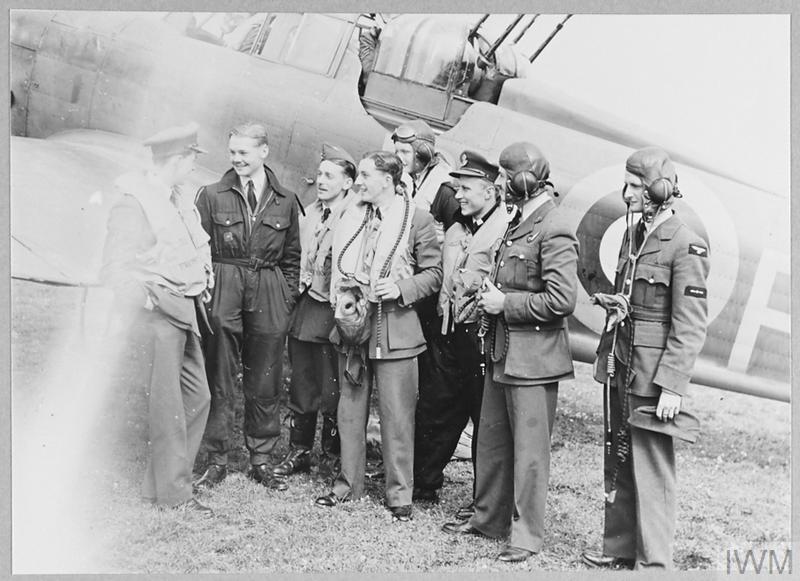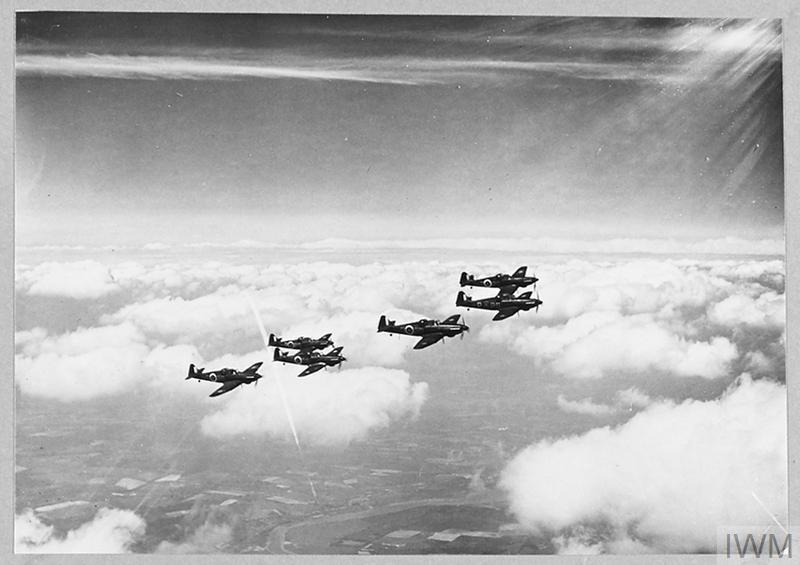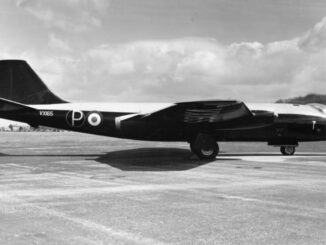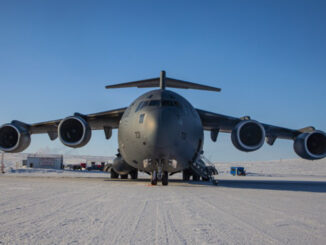 On 12th May 1940, Boulton Paul Defiant fighter performed its first operational sortie. On that day, six aircraft of that type, together with six Spitfires, executed a combat patrol over the English Channel and coastal waters of the Netherlands. The Defiants intercepted a single Junkers Ju 88 and shot the enemy aircraft down.
On 12th May 1940, Boulton Paul Defiant fighter performed its first operational sortie. On that day, six aircraft of that type, together with six Spitfires, executed a combat patrol over the English Channel and coastal waters of the Netherlands. The Defiants intercepted a single Junkers Ju 88 and shot the enemy aircraft down.
The Boulton Paul Defiant was designed in the mid-1930s, being a response to rapid development of fast bomber aircraft and aerial warfare model based on theories created by General Giulio Douhet.
According to that Italian air power theorist, the bomber aviation was the most important branch of any air force. It could break enemy´s will to fight by destroying government, military and civil targets in the hinterland and there was no way to avoid that damages. ´The bomber will always get through´, the Douhet theory said. And following it, many countries invested in development of fast bomber aircraft – usually much faster than fighter aircraft of the time.
The Royal Air Force was also affected by the Douhet theory. It was manifested by implementing a new generation of fast, turret-armed bomber aircraft – such as Vickers Wellington – aimed for breaking through the enemy anti-aircraft defence and performing long-distance raids without fighter escort. Nevertheless, the British authorities were aware that potential enemies would follow exactly the same way.
A two-seat, day and night interceptor equipped with rear gun turret seemed to be the right answer. It was expected that enemy bombers would perform raids against the British Islands without any fighter escort, therefore the new fighter aircraft was optimized for a single task of destroying such bomber formations.
According to Specification F.9/35 issued by the Air Ministry in April of 1935, the ´turret fighter´ had to be capable of flying 470 kph (290 mph) at altitude of 4,600 m (15,000 feet). There were no forward-firing guns necessary, and the only armament had to be placed in a hydraulic powered rear gun turret.
The Boulton Paul company, having already some experience with designing of turret-equipped aircraft, entered the competition with an aircraft designated P.82. It featured a French-developed gun turret equipped with four machine guns that was manufactured by Boulton Paul under licence and already used in some of the earlier aircraft manufactured by the company, such as Sidestrand and Overstrand bombers, as well as in Blackburn Roc naval fighter.

The P.82 project was evaluated by the Air Ministry and finally announced the second best, after Hawker Hotspur. Nevertheless, the British authorities decided to support creation of as much as seven prototypes of different design, submitted by Hawker, Boulton Paul, Fairey and Armstrong Whitworth.
On 11th August 1937, prototype of the P.82 successfully completed its maiden flight and shortly after received its final name, the Defiant. Nevertheless, the first flight of Boulton Paul aircraft was met with lack of interest in the Air Ministry, since the authorities preferred the Hotspur design. The problem was, however, that Hawker was approximately a year behind the initial development schedule. The Hotspur made its first flight in June of 1938 – until that time, the Defiant was at its final stage of development. Eventually, the Hotspur programme was cancelled and the Defiant was announced the winner of the ´turret fighter´ competition, followed by production order for eighty-seven aircraft.
In December of 1939, the RAF received its first production examples of the new fighter aircraft that were assigned to No. 264 (Madras Presidency) Squadron. During the next few months, the Squadron was training new aerial tactics and performed several evaluation flights. Their outcome was in line with earlier expectations. The new interceptor was able to destroy any bomber, by day or by night, as long as enemy aircraft would operate without fighter escort. In any other case, the Defiant needed to cooperate with ´classic´ fighters, such as Hurricane or Spitfire.
On 12th May 1940, the Defiants performed their first operational sortie. The formation of six ´turret fighters´ flew together with six Spitfires on a patrol mission to the vicinity of the Hague and back. During that flight, a single Junkers Ju 88 was spotted and shot down by the Defiants.
A similar patrol flight was repeated the following day. This time the Defiants intercepted and destroyed four Junkers Ju 87s, nevertheless soon after they were engaged by some Bf 109s. And the result of that dogfight was shocking – all the Defiants but one were shot down, despite the presence of Spitfire escort.

The first months of combat service of the new interceptor were marked by changing luck. There were days when the Defiants managed to intercept and destroy a couple of enemy aircraft without any loses – but the next day almost entire formation of the ´turret fighters´ was shot down by enemy fighters. It was also found that number of aerial victories claimed by the Defiant crews was exaggerated. As the turret covered 360° angle of fire, an enemy aircraft could be engaged by more than one Defiant at the time, and finally claimed as shot down by all crews involved in the fight.
Because of its silhouette, in the early months of operations the Defiants were often mistaken for Hurricane fighter. As the result, Luftwaffe pilots usually attacked them from the rear and in majority of the cases it was a fatal mistake. Although at the high cost, that lesson was quickly learned and the Defiants were then intercepted from lower hemisphere and from the front, their most vulnerable areas.
During the summer months of 1940 it became clear that high losses among the Defiant crews is not acceptable any longer. The cruel reality was that shooting down an enemy aircraft resulted in about one Defiant lost at the same time, even if there were Hurricanes or Spitfires nearby. Until the end of August 1940 more than half of all the Defiants delivered to the RAF squadrons were shot down by the German aircraft.
Therefore, starting in the summer of 1940, the Defiants were assigned to night operations only. It was widely considered as the right move, especially with the first night aerial victories that came at the end of the year.
That exclusive use of the Defiant in as the night fighter led to significant modifications of the aircraft. The Defiant Mk II that appeared in September of 1941 was equipped with the AI Mk IV airborne radar and more powerful Merlin XX engine.
The night fighter Defiants were mainly operated by No. 96, No. 151, No. 262 and No. 307 (Polish) Squadrons. They successfully protected the British night skies until the mid-1942, being then succeeded by Beaufighter and Mosquito.
Nevertheless, that did not mean the end of service for the Defiant. Although withdrawn from the frontline combat duties, the aircraft were still used for training and target towing. Several Defiants were also converted for air-sea rescue aeroplanes or even electronic countermeasure aircraft. In the latter role the Defiants were used to counter Freya, the German early warning radar system. Depending on the equipment used, the Defiant could either pretend to create an echo of one hundred bomber formation or completely jam the German radar.

Cover photo: The Bolton Paul Defiant is a two-seater fighter monoplane powered by a single Rolls Royce Merlin engine and carrying a multiple gun turret amidships. It is believed to be the fastest aeroplane of its class in service / original wartime caption (photo © IWM CH 147, cropped). All IWM photos used under Non-Commercial licence.



